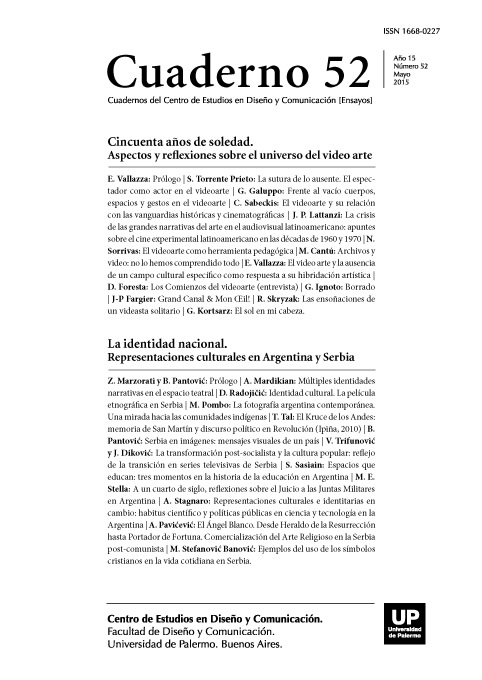Las ensoñaciones de un videasta solitario
Abstract
For an art student like me, immersed in the practice of painting in the early
‘80s, the original utopia video art mainly consisted in the appearance of a new form of
artistic expression, perceived both as a breath and an output that allowed to refresh my
practice and leave the dead end of the aesthetic vanguard then immersed in the controversy between neo-expressionist painting and minimalist conceptual art. Therefore I
continue painting, but with video. Since then two underlying problems continue to fuel
my thinking and my work. Can we see the video as a painting? Can we see the video painted? The originality of my video work lies in having aesthetic and historical roots in the
history of art, taken simultaneously with a thorough investigation of the qualities of the
electronic media, in the light of the concepts of “Vanity” and “Painting-Video “. I take as a
reference to the philosopher Jean-Jacques Rousseau who dealing with the boredom of the
saloons, equivalent to our “opennings”, conceived his “cup-and-ball moral .” Coincidentally, I made a video a few years ago showing a cup-and-ball in action. One day I´ll film my
dreams as a solo videographer.
References
Clair, J. (1983). Considérations sur l’état des beaux-arts. París: Gallimard.
Jouannais, J. Y. (1997). Artistes sans œuvres. París: Hazan.
La Bible. (1979). Traduction œcuménique. París: Le Livre de Poche.
Nietzsche, F. (1971). Par-delà le bien et le mal. París: Gallimard.
Rousseau, J. J. (2011). Les Confessions. París: Garnier.
Los autores/as que publiquen en esta revista ceden los derechos de autor y de publicación a "Cuadernos del Centro de Estudios de Diseño y Comunicación", Aceptando el registro de su trabajo bajo una licencia de atribución de Creative Commons, que permite a terceros utilizar lo publicado siempre que de el crédito pertinente a los autores y a esta revista.


